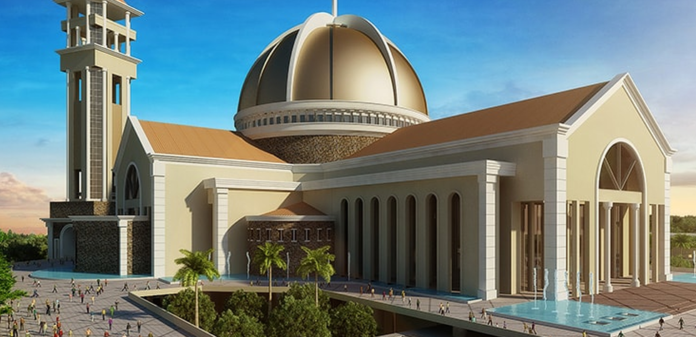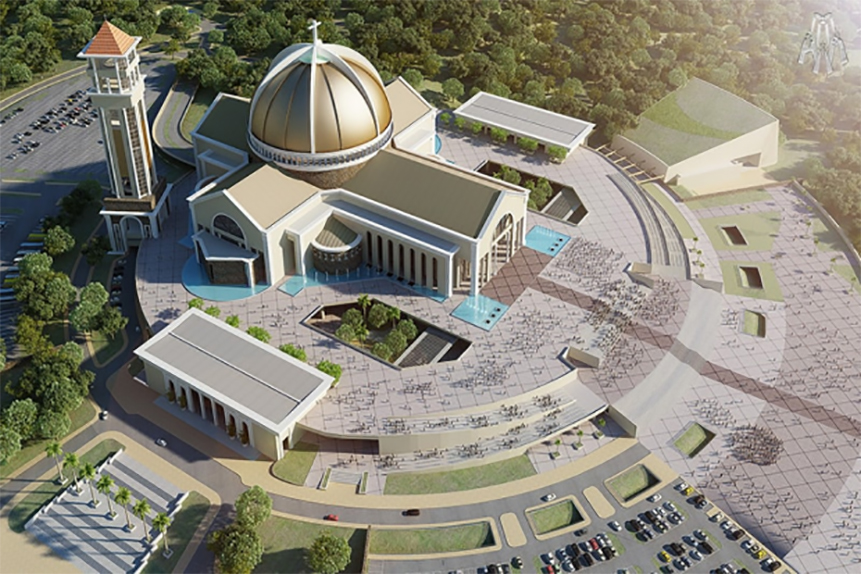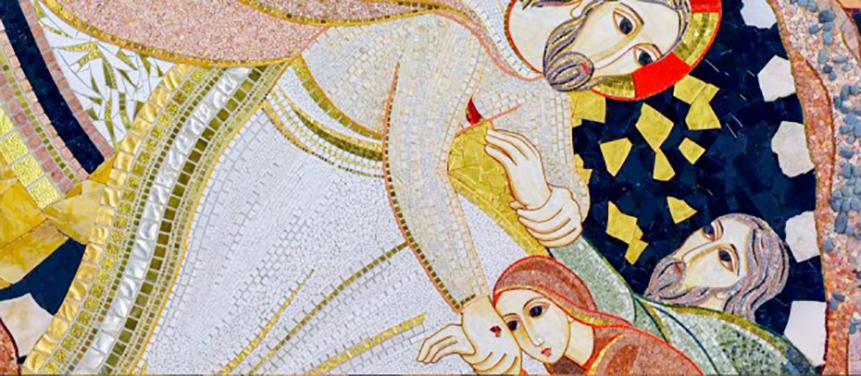(Goias, Brazil) – The Basilica of the Divine Eternal Father is a Catholic church and sanctuary located in the city of Trindade, in the state of Goiás, in Brazil, the only basilica in the world dedicated to the Divine Eternal Father. The first chapel was built around 1848 that covered with Burití leaves. Later, a major chapel was built on the banks of the Barro Preto. A third chapel was built in 1876. The first Shrine of the Divine Eternal Father was inaugurated in 1912. This first sanctuary is known as the ancient shrine and is the parent of the Parish of the Trinity.
In 1943, Don Emanuel Gomes de Oliveira, Archbishop of Goiás at the time, made it the cornerstone of the New Sanctuary. In 1955, despite all efforts, the work was not yet finished. In 1957, with the creation and installation of the Catholic Archdiocese of Goiânia, Archbishop Fernando Gomes dos Santos, the first Archbishop of this archdiocese, presented a project for the construction of the sanctuary. It was possible to carry out the novena and the feast of the Divine Eternal Father on the site in 1974.
The reform and adaptation of the building began in order to give it the dignity of being called “Sanctuary of the Divine Eternal Father” in 1994. With the help of pilgrims and devotees, the Church was completely renovated. In 2006 under the pontificate of Benedict XVI the church was declared Basilica.
This year’s celebrations, which took place at the end of June, broke another record and received about three million pilgrims during the ten days of novena and the feast, consolidating Trindade as the second largest religious destination in Brazil, next to Aparecida. During the ten days of the Novena in the shrine, led by the Redemptorist priests, celebrated 121 masses, 45 novenas and hundreds of baptisms conducted, and confessions heard. Only in the last three days of the festival, the basilica received 1.7 million visitors. The ox car pilgrimage, recognized in 2016 as a Brazilian cultural heritage by the National Institute of History and Artistic Heritage (IPHAN), consisted of over 350 cars, coming from Goiás and other states in the region – some of them took 20 days to reach the sanctuary.
The best design of the new sanctuary which was under renovation from 2012 to just over a kilometre from the current Basilica: the complex will have 145,000 square meters of built areas – equivalent to the Maracana stadium. Only the church will have more than 12 thousand square meters, which will make it the second largest church in Brazil and the third largest in the world. The church will have 6,000 people seated or 13,000 feet and the square around which will accommodate 250,000 people. The 110 meters high tower, higher than the National Congress Palace, will house 74 bells, including the largest bell in the world, Vox Patris, weighing 50 tons.
In view of the works of art, the sanctuary has recently confirmed the name of Marko Ivan Rupnik, one of today’s sacred artists. The Slovenian Jesuit is the director of the Aletti Center in Rome and is responsible for the works in mosaic-renowned churches such as pilgrimage sanctuary, the Basilica of the Holy Trinity in Fatima, the Sanctuary of San Pio da Pietrelcina, the Holy Shrine John Paul II in Krakow and the Redemptoris Mater Chapel in the Vatican. The mosaics Rupnik and his team will cover between 50 and 60 thousand square meters of walls of the new sanctuary.
Father Robson de Oliveira, the Rector of the Basilica between 2003 and 2015, founder of the Association of the Eternal Father (Afipe) and current provincial superior of the Redemptorists in Goias, for better organization and the growth of the devotion in the city of 121 thousand inhabitants, proposed a strategic development plan called Trinity +20. The Politicians wanted +10. “it is a political game. It’s useless, we need 20 years,” Fr. Robson said. “The Trinity will grow, and it will be a very important and strong city, with Catholics and non-Catholics”.
*****
The journalist went to Trindade to accompany the pilgrimage by invitation of the Association of the Eternal Father (Afipe).
(from Semper Familia)









